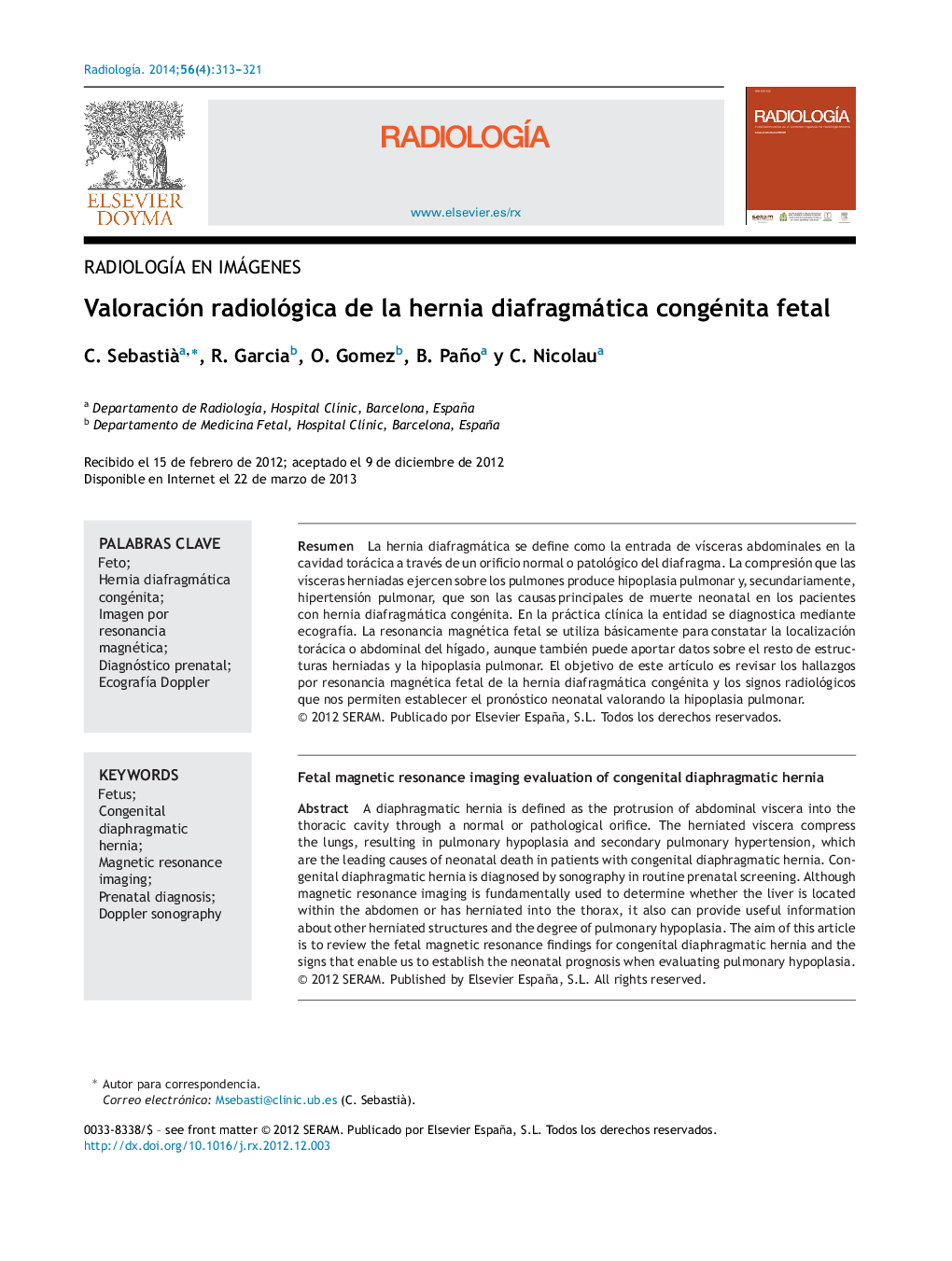| Article ID | Journal | Published Year | Pages | File Type |
|---|---|---|---|---|
| 4245369 | Radiología | 2014 | 9 Pages |
ResumenLa hernia diafragmática se define como la entrada de vísceras abdominales en la cavidad torácica a través de un orificio normal o patológico del diafragma. La compresión que las vísceras herniadas ejercen sobre los pulmones produce hipoplasia pulmonar y, secundariamente, hipertensión pulmonar, que son las causas principales de muerte neonatal en los pacientes con hernia diafragmática congénita. En la práctica clínica la entidad se diagnostica mediante ecografía. La resonancia magnética fetal se utiliza básicamente para constatar la localización torácica o abdominal del hígado, aunque también puede aportar datos sobre el resto de estructuras herniadas y la hipoplasia pulmonar. El objetivo de este artículo es revisar los hallazgos por resonancia magnética fetal de la hernia diafragmática congénita y los signos radiológicos que nos permiten establecer el pronóstico neonatal valorando la hipoplasia pulmonar.
A diaphragmatic hernia is defined as the protrusion of abdominal viscera into the thoracic cavity through a normal or pathological orifice. The herniated viscera compress the lungs, resulting in pulmonary hypoplasia and secondary pulmonary hypertension, which are the leading causes of neonatal death in patients with congenital diaphragmatic hernia. Congenital diaphragmatic hernia is diagnosed by sonography in routine prenatal screening. Although magnetic resonance imaging is fundamentally used to determine whether the liver is located within the abdomen or has herniated into the thorax, it also can provide useful information about other herniated structures and the degree of pulmonary hypoplasia. The aim of this article is to review the fetal magnetic resonance findings for congenital diaphragmatic hernia and the signs that enable us to establish the neonatal prognosis when evaluating pulmonary hypoplasia.
